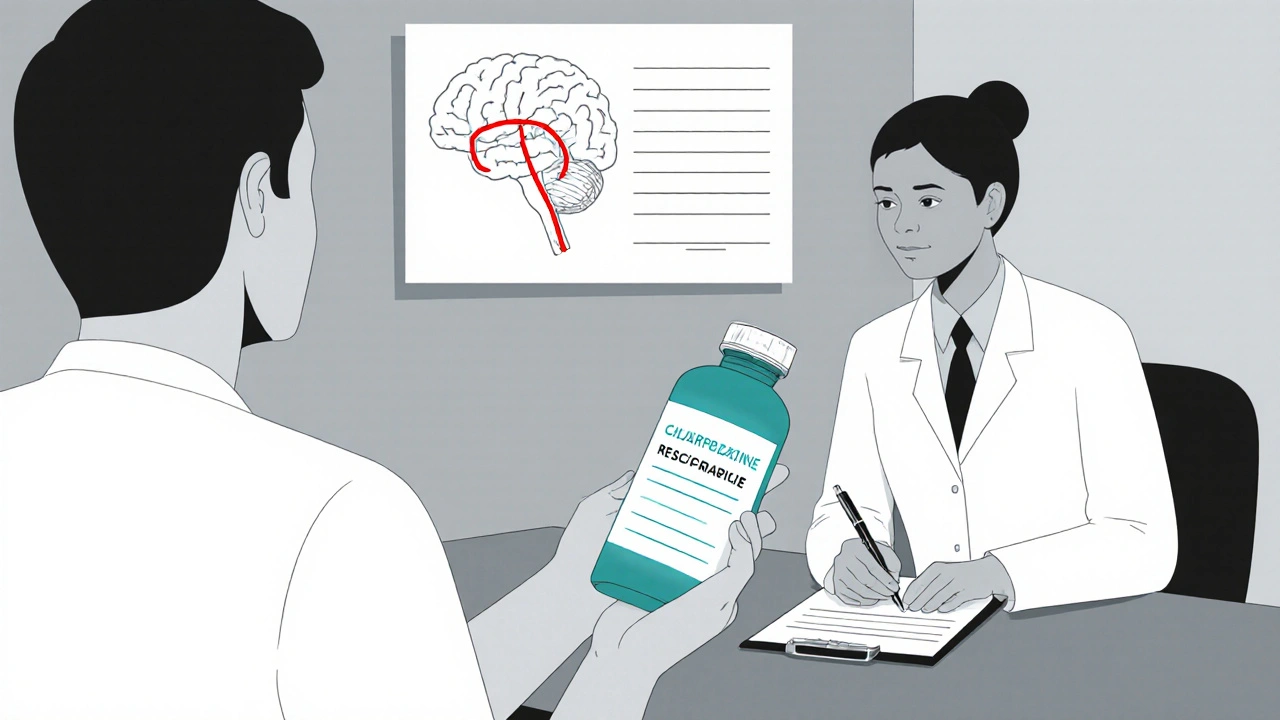tardive dyskinesia – essential overview
When dealing with tardive dyskinesia, a persistent, involuntary movement disorder that often develops after long‑term use of dopamine‑blocking drugs. Also known as TD, it can affect the face, tongue, limbs, and torso. Antipsychotic medication, drugs that block dopamine receptors to treat psychosis and bipolar disorder are the most common trigger. Movement disorder, a category of neurological conditions characterized by abnormal voluntary or involuntary movements includes tardive dyskinesia as a late‑onset form. Finally, Dopamine receptor antagonist, any substance that reduces dopamine signaling by binding to its receptors underlies the pharmacological link between these drugs and the disorder.
Understanding tardive dyskinesia starts with the fact that it usually appears after months or years of exposure to dopamine‑blocking agents. The body compensates for reduced dopamine activity, and when the drug is reduced or stopped, the nervous system overshoots, causing the characteristic jerky movements. This is why clinicians talk about “risk assessment” early in treatment. A simple Risk assessment, a systematic evaluation of patient‑specific factors that increase the likelihood of side effects that looks at age, gender, cumulative dose, and prior history can flag patients who need tighter monitoring.
Key factors that shape the risk
Age matters: older adults are more prone to develop TD because their brain’s dopamine system is already less flexible. Female sex also shows a slightly higher incidence, possibly due to hormonal influences on dopamine pathways. Duration and dose of antipsychotic use act like a dose‑response curve—longer exposure equals higher risk. High‑potency typical antipsychotics (like haloperidol) tend to carry a stronger TD signal than newer atypicals, though even low‑potency agents aren’t risk‑free.
Genetics play a subtle role. Certain polymorphisms in the CYP450 enzymes that metabolize antipsychotics can lead to higher blood levels, indirectly raising TD risk. While testing isn’t routine, it becomes relevant when a patient experiences early movement side effects. Co‑medications matter, too. Drugs that also affect dopamine, such as some anti‑emetics, can add to the burden, while anticholinergics may mask early signs, delaying detection.
Monitoring is not a one‑time event. Regular clinical checks using standardized scales—like the Abnormal Involuntary Movement Scale (AIMS)—help catch subtle changes before they become disabling. AIMS scores are easy to track over time, turning a vague concern into an objective metric. When a rising score appears, clinicians can consider dose reduction, switching to a lower‑risk atypical, or adding a protective agent such as valbenazine.
Management strategies fall into three buckets: prevention, mitigation, and treatment. Prevention starts with prescribing the lowest effective dose and opting for drugs with a better side‑effect profile when possible. Mitigation includes regular AIMS monitoring, patient education about early signs (like lip smacking or tongue protrusion), and rapid response to any change. Treatment options have expanded in recent years; VMAT2 inhibitors—valbenazine and deutetrabenazine—show real‑world reductions in TD severity with manageable side effects.
Beyond medication, lifestyle tweaks can help. Stress often worsens involuntary movements, so relaxation techniques, yoga, or gentle aerobic activity may provide modest benefit. Nutrition plays a role, too; maintaining adequate vitamin B6 and magnesium levels supports nervous system health. Some clinicians also trial botulinum toxin injections for focal dystonic components, especially when the tongue or facial muscles are most affected.
When it comes to patient communication, clarity is key. Explain that TD is a possible side effect, not a guaranteed outcome, and emphasize the importance of reporting any new movement—even if it seems minor. Provide written handouts that list warning signs and include a simple checklist for patients to review before each appointment. This shared‑decision approach builds trust and often leads to earlier detection.
In practice, the interplay between antipsychotic medication, dopamine receptor antagonism, and movement disorders creates a complex but manageable landscape. By linking risk assessment, regular monitoring, and modern treatment options, clinicians can reduce the burden of TD for many patients. The articles below dive deeper into each of these areas, offering step‑by‑step guides, drug‑specific safety tips, and real‑world caregiver advice.
Ready to explore detailed strategies, medication guides, and patient stories? Below you’ll find a curated collection that walks through everything from tapering risky drugs to using the latest VMAT2 inhibitors, all aimed at keeping tardive dyskinesia in check while maintaining effective mental‑health treatment.
Chlorpromazine and Tardive Dyskinesia Risk: What You Need to Know
- Laura Ledas
- Sep, 26 2025
Learn how chlorpromazine can cause tardive dyskinesia, its incidence, risk factors, monitoring tips, and modern management options for patients and clinicians.
Learn More